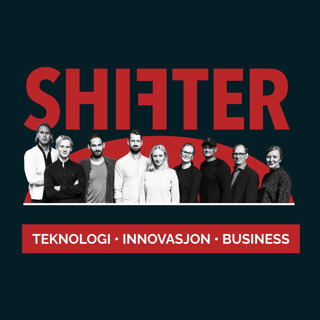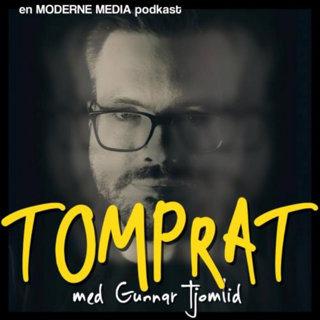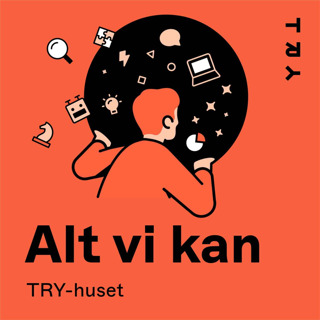
The Market For Enterprise (Secure) Browsers
Season two, episode 18: Evgeniy Kharam, a founder, CISO, architect, and podcast producer discusses the rise of Enterprise (Secure) browsers. You can read the show notes here and subscribe to updates. In the latest episode of AZT, Evgeniy Kharam, a founder, CISO, architect, and podcast producer, joins the discussion to talk about the rise of Enterprise (Secure) browsers. The conversation explores the importance of browser security and its relevance to the Zero Trust framework. Key Takeaways The birth of the enterprise browser - Remote Browser Isolation: Evgeniy explains the concept of remote browser isolation, which creates a layer of separation between users and potentially harmful websites. By browsing through a remote browser, users can mitigate the risks associated with malware and other online threats. Customized Browser Profiles: The conversation delves into the idea of using customized browser profiles to enhance security and control access. By providing contractors or temporary workers with specific browser profiles, organizations can ensure that only authorized individuals can access certain applications or data. Managed Device and Compliance: The discussion highlights the trend of using managed devices and the impact on compliance requirements. With the ability to enforce the use of specific browsers through Mobile Device Management (MDM), organizations can strengthen security measures and simplify compliance audits.
16 Nov 202346min

Beyond the Buzzword: Applicable use of AI in Cybersecurity
Catch this episode on YouTube, Apple, Spotify, Amazon, or Google. You can read the show notes here. The word AI, much like Zero Trust, has come with a lot of baggage in the past few years. It’s a term that’s been misused, slapped on the front of startups’ overpriced booths at RSA and Black Hat, and it feels like every cybersecurity product under the sun now supports it in some flavor or fashion. It's the same cycle we’ve been in the past, but this time everyone is jumping in. This week we are getting in front of the bandwagon and chat with a pioneer in the cybersec AI space who has seen how the technology has been evolving over the past decade, Oliver Tavakoli, the CTO of Vectra AI. “My contemporaneous definition of AI at any given moment in time is there's got to be enough pixie dust in it for people to view it as somewhat magical; so that's my incredibly technical definition. I'd say over the past 10-15 years, that is typically meant neural nets-that has those have been a stand in-and and obviously, neural nets can be used for discrimination [As opposed to a generative AI model]. Again, the example of cat (You search “Cat” on Google images, and it returns results that show images, in theory, of only cats) is an example of how they can be used in a generative sense, which is really the latest revolution that you see. And then the other thing is how broadly applicable they are and how well read they are. Tavakoli’s definition of AI provides the context for how AI is primarily applicable today in cybersecurity. But, in the past, typically these concepts were held back by technology. There is also a stark difference between what has been referred to as AI, or a discriminative AI model, and what is most popular today, or generative AI. It turns out in these large language models, as you make them bigger, there was always kind of the question of if you make them big enough. Will they just plateau or will they take off? It really wasn't a foregone conclusion that if you made them big enough they would take off, but it was a bet that was placed and a bet that turned out to have some merit to it. And that is the crux of today’s interview: what was and will be the past and future impact of AI on cybersecurity? Key Takeaways AI plays a significant role in both offensive and defensive cybersecurity strategies. Threat actors use AI to enhance their attacks, making them more believable and harder to detect. Defensive uses of AI include improving workflow and making SOCs more productive. Organizations must always assume that compromise is possible and focus on minimizing the impact of breaches.
2 Nov 202356min

AZT: Zack Butcher on Building Zero Trust Standards and Securing Microservices
Season two, episode 16: Zack Butcher discusses building upon NIST’s Zero Trust policies and standards, and ZT’s influence on a service mesh as it relates to microservices. Catch this episode on YouTube, Apple, Spotify, Amazon, or Google. You can read the show notes here. There are several guiding concepts that make it easier for organizations to build a Zero Trust strategy. The first that typically come to mind come from CISA and NIST. These core elements, ranging from the five pillars through to building a ZT architecture, offer a vendor-neutral path towards removing implicit trust. Organizations like CSA also do a great job of expanding upon this knowledge with more contributions from technology and service providers. This week, we take our first step towards understanding what goes on behind these policies, standards, and recommendations, and for that we have a well-equipped guest to walk us through it. Zack Butcher is one of the founding engineers over at Tetrate, a vendor that provides a consistent way to connect and protect thousands of individual microservices and deliver Zero Trust security operations across any environment. They also have their roots stemming from a team that worked at Google, which many of you are likely familiar with their connection to Zero Trust through BeyondCorp. However, he is also the co-author on NIST special publication 800-207A. If that looks familiar, it’s because it’s an expansion of the earlier mentioned core NIST resource, 800-207. NIST SP 800-207A builds upon that core architecture piece and hones in on access controls in cloud-native applications in multi-cloud environments. That is a bit of a mouthful, so here is Zack on what you need to know. When we talk about Zero Trust at runtime, there's a lot of FUD and a frustrating amount of FUD in the in the marketplace and a lot of vendors claiming certain things are Zero Trust and not. And you know, in that landscape, I wanted to really kind of push for people to have a very clear definition of Zero Trust at runtime, and it's a minimum definition. Let me be clear. You can do a whole lot more than what we talk about in the SP, but I try and give a very, very simple minimum definition. And that is five policy checks at runtime, and we call that identity based segmentation. Butcher also co-authored NIST SP 800-204A that focuses on building secure microservices-based applications using service-mesh architecture. So this week, Neal and Butcher ran down the rabbit hole of expanding upon these core Zero Trust resources, implications of a more secure environment at runtime, and identity-based segmentation.
19 Okt 202354min

AZT: API Security with John Kindervag, Chase Cunningham, and Richard Bird
Season two, episode 15: We talk ZT History and API security with the godfather of Zero Trust, Dr Zero Trust, and Richard Bird. Catch this episode on YouTube, Apple, Spotify, Amazon, or Google. You can read the show notes here. In the past few years, supply chain attacks and their impacts have or will soon overtake that of the damage done by ransomware. It’s of no surprise then that APIs are a critical attack vector that threat actors like to exploit, yet many organizations do not have a good understanding of how many doors they have running into their data. This week we chat with the godfather of Zero Trust, Dr. Zero Trust, and a chief security officer about the current state of API security maturity. Considering our guests, we, of course, also took the opportunity to chat a bit about Zero Trust's history. This week we have three very special guests: John Kindervag, the creator (godfather) of Zero Trust Chase Cunningham, AKA Dr Zero Trust, and the now VP of Market Research for G2 Richard Bird, Traceable AI’s Chief Security Officer Key Takeaways Like any other cybersecurity concept, APIs must have an asset inventory There is enough margin of error tied to the intended use of APIs that require continuous monitoring/verification There is a current maturity gap associated with securing the use of APIs in the name of speed and innovation, and often there is not a well-established owner Editors Note We will be taking a publishing break for the month of September as my daughter has arrived, and I will need to catch up on all the sleep I can get. We should be back in October and run through until the holiday break before we wrap season two. I’m also working on a few experimental podcast series during my parental leave, so stay tuned. At least one in particular should be of interest to our audience here. Also, if you work for a cybersecurity org and are interested in launching a podcast, slide into my inbox if you need a hand.
31 Aug 202338min

Adopting Zero Trust: The Illusion of Passwordless
The illusion of going passwordless with Derek Hanson, Vice President Solutions Architecture and Alliances at Yubico. You can read the show notes here. True or False: The concept of passwordless is new. False. This is shocking, we know. Considering the amount of hype around the concept, it certainly can feel like a new concept since the masses are becoming more familiar with it; however, the message is a bit jumbled. For ages, we’ve used things like biometrics (fingerprints or iris scans) and even a PIN to access money on a debit card, but more recently, there has been an increase in misrepresentations about how secure passwordless technology is, simply because there is not a password involved. As cybersecurity practitioners, we know that the simple removal of passwords alone won’t prevent a successful phishing attack, which means multifactor authentication needs to play a role in getting us closer to the Zero Trust concept. Fortunately, we have a guest this week who is well-equipped to help us navigate the ins and outs of passwordless concepts, passkeys, and the split between identification and authentication. Derek Hanson is the Vice President of Solutions Architecture and Alliances at Yubico, who has spent the last 8 years contributing to the shaping of a physical piece of hardware, Yubikeys, designed to improve authentication. Prior to that, he worked at Costco, focusing on identification and IAM. But first, let’s improve your personal security stack… Giveaway - Yubikeys! If you already have a Yubikey, you already know there is always an opportunity for one more in your stack. If you’re new to Yubico’s offering, this is the perfect time for you to grab your very own YubiKey 5C NFC and gain phishing-resistant MFA. It even works with most password managers, too. To enter, we’ve given you a bunch of options on how you can increase your odds of winning one of two keys. You must be based in the US, though. [**Enter the giveaway here](https://www.rafflecopter.com/rafl/display/c9435e741/?).** We’ll close the giveaway in about two weeks and announce it in our next episode.
10 Aug 202351min

Adopting Zero Trust: Philosophy of Prevention with iHeartMedia’s Janet Heins
Season two, episode 13: Cybersecurity prevention on a global scale with Janey Heins, Global CISO for iHeartMedia. At the heart of Zero Trust is the idea of prevention. If you don’t trust anything or any person, you are playing in the same pool as risk avoidance. While total risk avoidance isn’t feasible, Zero Trust gets us closer to reality. Now, map this up to an organization with a global footprint, with significant infrastructure sprawl, and you’ve got one very complex scenario on your hands. This brings us to this week’s guest, Janet Heins, iHeartMedia's Global CISO, who will help us navigate the philosophy of cybersecurity prevention on a global scale. Putting The Conversation Into Context With more than a decade behind her as a CISO, Heins’ experience stems from working with some massive brands. As a leader, she’s particularly passionate about translating business needs into technology processes or solutions, while at the same time bridging the language barriers that often stem between IT, cybersecurity, and the other adjacent areas. iHeartMedia has over 11,000 employees and a vast physical and digital footprint. With 860 radio stations across the US and 20,000 events annually, the company is part of the emergency broadcast system and has to be ready to respond to threats quickly. At a global level, Heins makes it clear that strong detection and response capabilities, as well as prevention measures, are critical elements of prevention. And while prevention can take many forms, in the context of today’s episode, we dig into security tools, hiring security professionals, and the basics, such as providing security awareness training to employees. One challenge of securing a large organization like iHeartMedia is consolidating the tech stack. iHeartMedia has a blended architecture of OT and IT, with legacy hardware and systems that need to be secured. Heins stresses the importance of communication and collaboration between the IT and OT teams, as well as being open to new tools and automation.
27 Jul 202344min

Adopting Zero Trust: Continuous Trust
Over the past two years, we’ve explored the ins and outs of Zero Trust, ranging from the concept as a strategy down to the more technical components, such as how it impacts the physical world as found in IoT devices. However, what is often missed in these conversations, is at what point an organization can actually build trust. Not just crawling up from the baseline of zero but achieving continuous trust. The short answer? Defense in depth, building security in layers, and ensuring every 1 and 0 is secure at the offset while continuously monitored through automation. And this is where we get to introduce this week’s guests, who were kind enough to be pulled away from a busy conference. This is also a special episode for us, too, as it’s the first in-person interview we’ve done since launching this series. Live (June 22, 2023) from Drataverse, we have Daniel Marashlian, the co-founder and CTO of Drata, Ty Sbano, the CISO for Vercel and an angel investor at Silicon Valley CISO Investment Group (SVCI), and Matt Hilary, the Vice President of Security and CISO at Drata. You can read the show notes here.
13 Jul 202329min





















